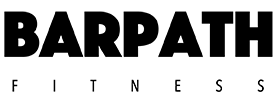Whether you’ve been in the fitness world for years or you’re just starting out, there is a learning curb to understanding gym and weight room jargon. This blog covers fitness lingo, including bulking and what it is, cutting, toning, bro science, cardio bunnies, and more.
What Is Dirty Bulking?
In order to grow tissue (more muscle) on your body, you need the energy to do so. To get this energy, you need to be eating at a caloric surplus so you can build lean tissue. There are other terms for this, such as build mode, but bulking is a common term for this caloric surplus.
Dirty bulking is when an individual is in a caloric surplus to build muscle (build mode). However, the individual is eating foods that are carb dense, unhealthy, and ultra-processed out of convenience. Sometimes these individuals track their protein, and other times they do not. This results in a body fat gain along with muscle gain.
What Is Clean Bulking?
Clean bulking is maximizing a caloric surplus to build muscle, however, the individual is eating a surplus of “clean” foods in order to build muscle. This looks like a diet that contains mostly whole foods and is maximizing whole sources of protein and fiber, which might take more tracking and food prepping.
Pros & Cons Of Dirty Bulking vs Clean Bulking
Bulking might look like adding 300 calories per day above maintenance and performing three full body workouts per week that focus on compound movements for 3-4 months. An example of clean bulking looks like eating more sweet potatoes and vegetables, and eating more whole protein sources like meat. When an individual clean bulks, they will see an increase in muscle mass with low fat gains.
Examples of dirty bulking are eating pizza, chips, sausage, and ice cream. The result of dirty bulking is gaining an excess of body fat along with muscle.
Nutrition & Health Fitness Terminology
Leaning out/Cutting
Leaning out or cutting means that an individual is in a fat loss phase. An individual needs to be in a calorie deficit in order to cut. When cutting, it’s important to track protein and other macros to make sure you’re still optimizing nutrient intake.
Toning
Toning is a word made up by the fitness industry to describe women who have muscle so they won’t feel like they “look like a man”.
Toned is being lean enough to see your muscles. As a verb, toning is building muscle while losing fat. Although, in a perfect world, you can do both at the same time, “toning” takes a lot of monitoring, knowing your maintenance calories, tracking your macros, having a solid routine, and a lot of patience & time. Essentially, toning refers to body recomposition.
PR
PR means personal record or hitting a milestone in your own personal fitness journey. A PR could be you squatted more weight today than you ever have or you got your first chin up.
Long Lean Muscles
Long Lean Muscles is a marketing term. muscles have an origin and insertion point and you’re stuck with it. You can’t lengthen your bones. When your muscle grows, it gets bigger. It doesn’t get “longer”. This term was created to describe women because, in general, society tells women that they don’t want bulky muscles.
Bro Reps
Bro reps means performing exercises with poor form or incomplete range of motion in pursuit of lifting heavier weights.
Bro Science
Bro Science refers to fitness advice or information based on anecdotal evidence, personal experience, or misinformation rather than scientific research. Social media has a lot of bro science. It’s always best to do your own research.
Cardio Bunny
A cardio bunny primarily focuses on cardiovascular exercise, such as running or cycling, and neglects strength training. The outcome is being “skinny”, but having more body fat than you would like.
Swole
This term refers to having large or swollen/inflamed muscles after a workout.
Performance & Recovery Terminology
DOMS
DOMS stands for delayed onset muscle soreness. DOMS refers to having delayed soreness from a workout. Generally, the onset happens the second day after a workout.
HIIT
HIIT stands for high intensity interval training. This type of training aims to elevate the heart rate to a certain degree for a defined interval of time.
Drop Sets
This is an intensity technique when lifting. In a drop set, an individual will complete a set and immediately complete another set at a lesser weight. Drop sets can be structured a few different ways. For example, an individual might do a set of bicep curls at an intensity level of 9, then immediately after grab lesser weights and do a set to failure.
EMOM
EMOM stands for every minute on the minute. Essentially, you start a particular movement at the top of a minute. Once you complete that movement, you can rest and start the movement over again at the top of the next minute. EMOMS can be used with body strength movements, eccentrics, pull ups, and chin ups.
1RM
1RM stands for one rep max. This is your maximum weight that you can lift in a certain movement.
Anabolic
Anabolic means stimulating or building muscle, causing muscle growth.
AMRAP
AMRAP stands for as many rounds as possible. Popularized by crossfit and does not maximize resting between sets. AMRAP can also stand for as many reps as possible.
Deload
Delod refers to a week and or period of time when you lower your volume and intensity so your body can recover. Deloading is important if you are nursing an injury, feeling stressed, or your body is feeling worn out. According to research, if you take a deload week every 4th week of training, the muscle gains are the same.
Gains
Gains refers to muscle gains.
ROM
ROM is range of motion.
Sandbagging
Sandbagging refers to intentionally going less intense or doing less weight than you can.
TUT
Refers to time under tension during a set.
What the Bulk? Did You Learn Some New Lingo?
Knowing these terms is important to understanding the depth and complexity of strength training. These terms can also steer you in the right direction when it comes to eating right, doing your own research, and hiring a professional to add some of these techniques to your training program, such as deloading and dropsets to your routine.
Want to learn more about taking control of your nutrition to optimize your health? Get three weeks worth of help here or listen to our Stronger Than Your Boyfriend podcast episode: What the Bulk: Fitness Lingo Explained.



